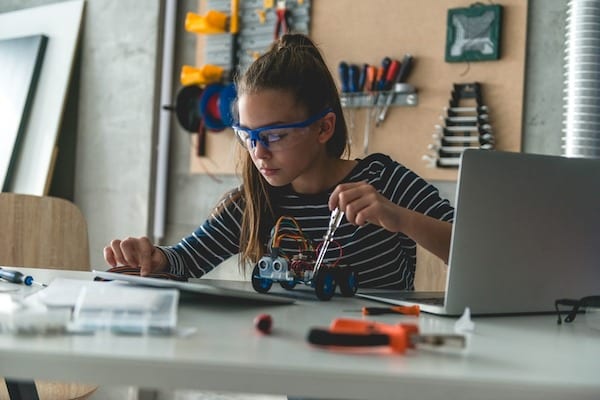Did you know that when children aged nine to eleven were asked to draw a scientist two-thirds drew a man? Or, did you know that around only one-third of girls in year 4 were confident in their maths ability, compared to 42 per cent of boys in year 4?
We all should well know by now, biological sex does not innately affect one’s potential to succeed and achieve in science, technology, engineering and mathematics (STEM). But stereotypes and confidence are impacting the decisions and choices our boys and girls are making. Take this statistic as an example: boys are three times more likely than girls to choose physics in Year 12 and nearly twice more likely than girls to choose advanced mathematics in Year 12.
And, all of this matters.
We need girls engaged in STEM because it’s simply unfair that gender limits choice. More so than this, we need girls engaged in STEM because this is critical for their future economic security.
As Labor’s Assistant Minister for Innovation, I am passionate about changing the underrepresentation of girls in STEM. Today, [Thursday, 11 October 2018] is the International Day of the Girl. This year’s theme is ‘With Her: A Skilled GirlForce’ aimed at raising awareness about the needs and opportunities of girls to attain skills for employability.
All around the world, girls need to prepare to enter an entirely new workforce to what we have today, a workforce that is being transformed by innovation and automation. As part of this year’s theme, I want all of us to think about what this means for our girls in Australia – what do our girls need for their future workforce capabilities?
Every day, we read another article about how technological advancement will cause robots to replace workers; a reduction in the demand for routine, manual tasks such as bookkeeping. Currently, rapid technological advancement is causing the labour market to change what it demands from our workers.
The nature of work is changing, which means the nature of our workforce has to change. And, it’s been well-established that these changes must be underpinned by a STEM literate workforce. We know girls in Australia are our most educated generation. But, at the moment, a STEM literate workforce is leaving our girls behind.
When it comes to participation and approaches to studying or working in STEM, there is a gendered divide. Sadly, this gendered divide can be observed very early in the educational decisions made by our girls and boys.
Whilst progress has happened in Australia we are nowhere near where we need to be to achieve gender parity in STEM. This is because obstacles for girls in STEM have deep and entrenched societal, cultural, and institutional roots, which are difficult to change. This will be hard work, but it is work that we must do. Because, our girls need all of us to do better – we need to secure their future economic security and create A Skilled GirlForce.

